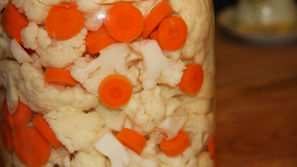Grub Gulch turned violent
- Bill Coate
- Aug 18, 2021
- 4 min read

Courtesy of the Madera County Historical Society
This view of Grub Gulch taken in the 1890s shows the Thomas Hotel on the left, the scene of the shooting of Charles Brim. Next door stands Abe Taylor’s merchandise store.
Gold! The discovery of the precious metal along the Fresno River brought thousands of placer miners into the Raymond area, and by 1851, they were calling their gathering, Grub Gulch.
Over the years, Grub Gulch emerged from its tent city status to take on all of the characteristics of a settled community. In time the town could boast of two hotels, a rooming house, five saloons, a grocery store, and a general merchandise store. Located along a curve in the road between Raymond and Ahwahnee, Grub Gulch really began to prosper when in 1880, the nearby Gambetta mine was opened. Then in 1891, the Thomas Hotel was built.
The Thomas Hotel was an imposing edifice, consisting of twin, two-story wings connected by a long front porch with a balcony. Set as it was, next door to Abe Taylor’s general merchandise store and across the street from the Morrison House, it was the epitome of refinement. The rough and tumble little town of Grub Gulch had been yanked out of its frontier garb and clothed in the garments of civilization.
Just below that thin veneer of refinement, however, lay all of the emotions of the Old West. Men still packed pistols in Grub Gulch at the turn of the century, and some were quite willing to settle their disputes with them, even if it meant a public fight right out on the porch of the Thomas Hotel.
It was Friday evening in Grub Gulch. The date was June 21, 1902. John Noble had just finished his shift at the Gambetta mine and was walking through town about 6 P.M. As he neared the Thomas Hotel, he saw two men arguing on the porch. One was a large man--over 6 feet tall--and very muscular. The other, by comparison, was very small, about 5 feet, 8 inches and not much over 150 pounds. It was clear to Noble that the large man was the aggressor and that the smaller man was attempting to avoid a fight.
Just as Noble reached the hotel porch, he was joined by Frank Diereck and Nelson Anderson. The three men could not believe what they were seeing. Charles Brim, the large man, belted Jack Keith with a roundhouse punch that sent the smaller man reeling. Keith hit the front door of the hotel and dropped to the floor. From his knees he implored Brim, “I’ve had enough, I quit.”
When it became obvious that Brim had every intention of continuing his attack, Diereck stepped in to try to break it up. At that point, Brim turned on him, threatening the would-be peacemaker with the same treatment that Keith was receiving. Diereck backed away.
By that time Keith had regained his footing and was inching toward the front door when Brim let him have it again. Once more the smaller man went down, with a nasty gash above the left eye. This time he didn’t get up right away. He informed his assailant that he was armed and that he did not intend to take any more punches. As he struggled to his feet for the second time, Keith pulled out a .32 caliber Smith and Wesson revolver. Brim, however, wasn’t impressed at all.
“I don’t believe that you have the nerve to pull the trigger,” taunted the larger man. With that Brim hit Keith again, this time under the chin. He hit him so hard that he lifted Keith off of the floor of the porch. As he went into the air, Keith fired his first shot; it found its mark but was only a flesh wound. When he hit the ground, Keith fired a second shot. This salvo also hit his attacker but failed to stop the beating. Brim commenced to kick Keith while he was down, so the latter pumped two more shots into the aggressor at point blank range. This finally ended the fracas.
Brim grabbed his stomach, doubled up, turned facing the street and fell. Keith saw his chance, scrambled to his feet, and ran into the hotel. Noble, Diereck, and Anderson rushed over to Brim and turned him over. His most serious wound was the one in his side from which blood was pouring.
The wounded man was taken into the lobby of the Thomas Hotel and there he died within 30 minutes. The body was left on the premises until the authorities could be summoned. Keith, convinced that it was safe to come downstairs, went to Madera where he contacted attorney R.E. Rhodes. Upon the advice of counsel, Keith went to the Madera County Jail and awakened deputy sheriff, J.F. Lewis.
By noon the next day, Coroner Jay had journeyed to Grub Gulch to hold an inquest into the killing of Brim. The result of that deliberation was to completely exonerate Keith. If his action was not justifiable homicide, nothing was.
What the two men were at odds over was never made public. Brim was buried, and Keith resumed his job as foreman of the Gambetta Mine. Life in Grub Gulch went on just as before, but not for long. Four years later the mine closed, and in four more years the last saloon shut its doors. On Aug. 15, 1918, the post office was closed, and Grub Gulch, like Charles Brim, received a mortal wound from which it never recovered.
Throughout its existence, Grub Gulch never did completely shed its frontier character, but it did carve a niche for itself as proof that the Old West was alive in Madera County.


























Comments